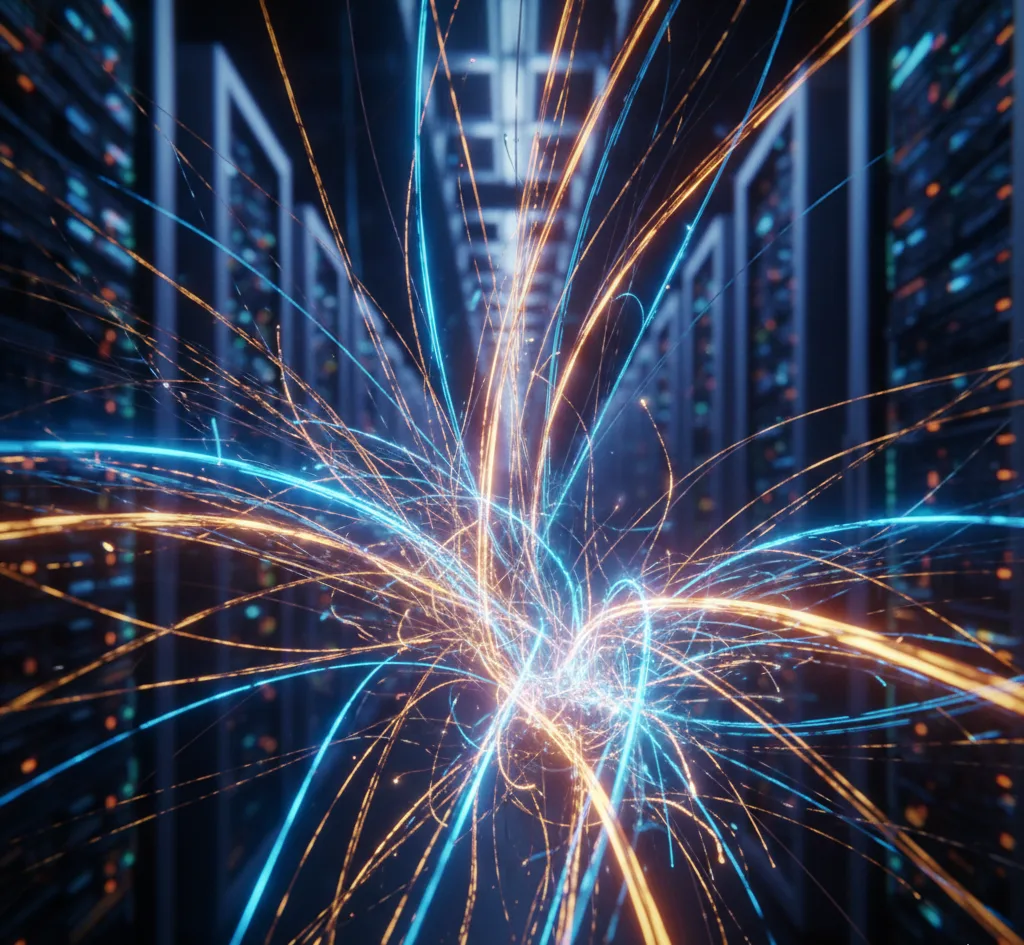A Volatile 2025: AI’s Unprecedented Impact on Our Industry

As we look back at 2025, a single, powerful force defines the year: Artificial Intelligence. The fiber optic cabling industry has always been cyclical, but the AI revolution has triggered a period of accelerated volatility and unprecedented demand that has fundamentally reshaped our strategic landscape.
For us, as your ODM/OEM/JDM partner, and for you, our Tier 1 and Tier 2 connectivity vendors, this is not just a technology trend—it is an imperative. The global fiber optic cable market, already estimated at $13.92 billion in 2025, is projected to surge to $20.94 billion by 2030. This robust growth is fueled by 5G, hyperscale data centers, and, most critically, the massive infrastructure required for AI-driven applications.
The financial and operational pressures resulting from this sudden surge have been intense. As Pierluigi Contessa, Vice President & Treasurer at Prysmian Group, noted, the company has faced “treasury challenges exacerbated by… market volatility” while managing “growing demand for its products driven by data center openings… and technological advancements like AI and 5G networks.” The industry must scale globally while grappling with these rapid, unpredictable market swings.
Section 1: The Transformative Shockwave: AI’s Demand on Your Customers’ Networks
The true source of 2025’s volatility lies with your end customers—the Hyperscalers, Cloud Providers, and Major Telecoms—who are racing to build the “AI factory.” For them, the network is no longer just transport; it is a computational resource. This shift imposes three critical, non-negotiable demands:
AI workloads, particularly the training of large language models (LLMs) and real-time inference, require an exponential increase in physical fiber.
“Gen AI requires fiber density and scale on a level that few could have predicted.”
The industry is responding with fiber that maximizes fiber count in minimum space. Corning CEO Wendell P. Weeks confirmed the strategic response:
“This marks the first outside-plant deployment of Corning’s new gen-AI fiber and cable system, which will enable [customers] to fit anywhere from two-to-four times the amount of fiber into their existing conduit.”
In the age of real-time AI (e.g., autonomous systems, financial trading), every nanosecond of delay is a performance killer. Fiber’s inherent low-latency advantage is why it is the only viable foundation for these mission-critical applications.
“Every millimeter of cable extends the transmission time and thus expensive turnaround time.”
“As data centers face unprecedented energy demands and latency requirements, our hollow-core fiber technology delivers the critical infrastructure backbone needed to support this exponential growth.”
With new builds and retrofitting projects accelerating in 2025, your customers’ customers demand maximum fiber count in minimum space, coupled with rapid, error-free deployment.
“plug-and-play handling and installation in their current and upcoming product portfolios… to enable more speed and productivity from their available labor.”
Section 2: The Double-Edged Sword: Challenges for Tier 1 and Tier 2 Vendors
For our valued customers—you, the Tier 1 and Tier 2 vendors—this AI boom is a double-edged sword. It drives unprecedented revenue but imposes immense operational strain and strategic risk.
Challenge 1: The Pressure to Innovate and Scale Simultaneously
You must not only accelerate your capacity to meet current demand but also rapidly innovate to meet the next generation of technical requirements.
“scalable, future-proof infrastructure” capable of adapting to the shifting AI requirements.
Challenge 2: Next-Gen Physical Constraints and the Thermal Wall
The jump from 400G to 800G, and now the push toward 1.6T, is hitting fundamental physical constraints that challenge cable and connectivity design.
Looking Ahead: Partnership in a High-Stakes World
The volatility of 2025 is a direct consequence of AI’s power. It has proven that fiber optic infrastructure is the foundation of the digital economy. This year has forced you to adapt to unprecedented demands for speed, density, and flawless quality.
As we look toward 2026, the AI revolution is evolving into a more complex infrastructure challenge, presenting three key strategic frontiers that require immediate action from our partnership:
Future Challenge 1: The Optical Integration Revolution (CPO/NPO/LPO)
The industry-wide power consumption crisis is forcing a radical, architectural shift in how optics connect to silicon, moving away from traditional pluggable modules to integrated solutions like Co-Packaged Optics (CPO) and Near-Package Optics (NPO).
Future Challenge 2: The Quantum Security Imperative
The threat of quantum computing is moving from theoretical to practical. Data harvested today (e.g., via fiber tapping) can be stored and decrypted instantaneously by a future quantum computer—the “harvest now, decrypt later” threat.
Future Challenge 3: Mastering 1.6T Complexity and Automation
The shift to 1.6T (using 200G/lane technology) introduces unprecedented complexity in manufacturing and fiber management.
Conclusion
The pace of change in 2025 has been exhilarating and exhausting. The volatility is simply the price of leading a technological revolution. To succeed in this new environment, we must embrace the future not just as a set of threats, but as a series of design problems waiting for revolutionary optical solutions.
As we stand ready to cross the optical frontier into 2026, let us remember the rallying cry of those who build the unseen backbone of the digital world:
“The future of AI will not be measured in transistors, but in femtoseconds of light.”
If you want to know more about us, you can fill out the form to contact us and we will answer your questions at any time.